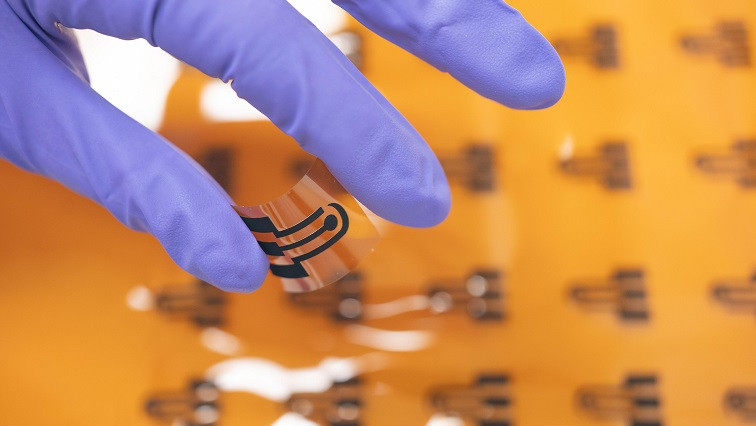Wearable sensors are crucial in continuously monitoring vital signs and other health indicators, providing real-time health insights that enable proactive and personalized medical care. However, producing these devices often requires specialized facilities and technical expertise, limiting their accessibility and widespread adoption.
The team, led by Assistant Professor Tyler Ray in the Department of Mechanical Engineering (College of Engineering) and Department of Cell and Molecular Biology (John A. Burns School of Medicine), introduced a low-cost, stencil-based method for producing sensors made from laser-induced graphene (LIG), a key material used in wearable sensing platforms.
“This advancement allows us to create high-performance wearable sensors with greater precision and at a lower cost,” said Ray. “By using a simple metal stencil during the laser patterning process, we’ve overcome a key limitation of the traditional fabrication process, which opens up new possibilities for sensor design and functionality.”
By employing commercially available metal stencils, the UH Mānoa team was able to reduce the minimum feature size from about 120 micrometers to just 45 micrometers. This allows for the creation of more complex sensor designs, such as fine-line microarray electrodes, which were previously difficult to achieve with standard laser processing.
“We demonstrated the practicality of our method by fabricating temperature sensors and multi-electrode electrochemical sensors,” Ray explained. “These devices exhibited enhanced performance, which we attribute to the improved resolution and quality of the graphene patterns.”
The study was published in Biosensors and Bioelectronics in August 2024 as part of the journal’s highlight series “Young Scientists in the Americas.”
This innovation builds upon Ray’s previous work on the “sweatainer,” a 3D-printed wearable sweat sensor that collects and analyzes sweat to provide insights into various health conditions such as dehydration, fatigue, and serious illnesses like diabetes. The s-LIG method further enhances the potential for accessible health monitoring technologies by enabling scalable fabrication of high-performance sensors without reliance on traditional, resource-intensive fabrication pathways.
Read the original article on University of Hawaii System.







